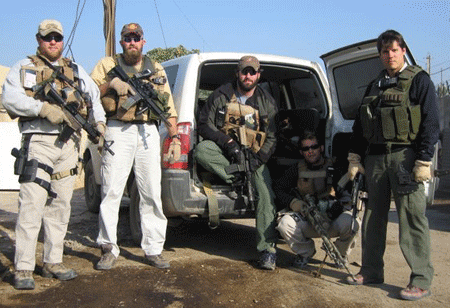In April 2015, when asked about radicalization and the emergence of ISIS foreign fighters in Canadian cities, CSIS Director Michel Coulombe replied, “The terrorist threat to Canada’s national security interests has never been as direct or immediate.” According to the latest publically available information, CSIS is aware of approximately 180 individuals with connections to Canada who are suspected of terrorist activity abroad, over half of whom are believed to be in Syria or Iraq. The agency is also aware of approximately 60 extremists who have returned to Canada, although it is difficult for any agency to provide statistics on radicalization as well as foreign and returning fighters, making it likely that these numbers are actually much higher.
Calgary has produced a relatively large number of foreign fighters when compared to other major Canadian cities, leading the city to be labeled a ‘hotbed of terrorism’ by political pundits, experts, and Calgarians alike. Although no definitive statements can be made about the scope of radicalization in Calgary, or any city for that matter, experts have suggested that over 30 young people from Calgary have likely travelled abroad to engage in global jihad. Additionally, many high profile homegrown terrorists have come from the Albertan city, making it necessary to further investigate radicalization in Calgary and why the city has emerged as a key Canadian recruitment zone for ISIS militants.

Perhaps the most well-known Calgarian foreign fighter is Damian Clairmont, a young man who fled to Syria in 2013 to fight with al-Nusra Front and, eventually, ISIS. Clairmont, who preferred to be addressed by the nom de guerre Abu Talha al-Canadi, was killed in January 2014 by members of the Free Syrian Army. He suffered from depression, dropped out of high school at age 14 and attempted to take his own life at age 17. Clairmont did not travel alone; he made the journey with Salman Ashrafi, brothers Collin and Gregory Gordon, and two others whose identities have not been confirmed. Although not much is known about the two nameless individuals, Clairmont, Ashrafi, and the Gordon brothers became close and lived in the same apartment building above a small Islamic centre.
Ashrafi was a middle-class Canadian man and husband who worked as a business analyst and was preparing to return to school and earn his MBA. He died in June 2014, after carrying out a car bombing north of Baghdad. Collin and Gregory Gordon were killed in clashes in the town of Dabiq in December 2014, according to an ISIS supporter’s Twitter page. Collin Gordon was a popular student athlete at Thompson Rivers University in British Columbia. Gregory, on the other hand, was more isolated and, due to his sickle-cell anemia, he was often in the hospital.
 Another high-profile case is that of Farah Mohamed Shirdon, also known as Abu Usamah Somali, who was reported dead, but resurfaced months later in a Skype interview with Vice News. Shirdon’s classmates described him as a very bright, but easily angered young man. He was pursuing an administrative information management diploma, but never finished and later became involved with local drug dealers. After a while, according to a local Imam, Shirdon became interested in the sermons of prominent jihadist clerics, including Anwar al-Awlaki who was the inspiration behind the Fort Hood shootings, the Christmas Day bombing, the foiled Times Square bombing, and a variety of other attacks around the world. Interestingly enough, Damian Clairmont, Salman Ashrafi, and the Gordon brothers were also fans and followers of the Yemeni-American ideologue.
Another high-profile case is that of Farah Mohamed Shirdon, also known as Abu Usamah Somali, who was reported dead, but resurfaced months later in a Skype interview with Vice News. Shirdon’s classmates described him as a very bright, but easily angered young man. He was pursuing an administrative information management diploma, but never finished and later became involved with local drug dealers. After a while, according to a local Imam, Shirdon became interested in the sermons of prominent jihadist clerics, including Anwar al-Awlaki who was the inspiration behind the Fort Hood shootings, the Christmas Day bombing, the foiled Times Square bombing, and a variety of other attacks around the world. Interestingly enough, Damian Clairmont, Salman Ashrafi, and the Gordon brothers were also fans and followers of the Yemeni-American ideologue.
These young men were undeniably different. Damian Clairmont was a clinically depressed high school dropout who constantly reinvented himself, looking for closure and acceptance. Salman Ashrafi was married, not economically disadvantaged, had a respectable job, and was planning to pursue further education. Collin Gordon was well liked, while his brother was bed-ridden and sometimes isolated. Farah Mohamed Shirdon was a temperamental young man who was already engaging in criminal activity. Their differences make it clear that it is difficult to typify terrorists based on socio-economic status, mental stability, or public persona.
So, what similarities do these young men have, and what is it about Calgary that has contributed to the decision of many young people in the city to follow in their footsteps? The men shared a jihadist worldview and they were inspired by similar teachings and ideologues. These factors are not inherent to Calgary, though, and they cannot alone explain the city’s higher-than-average radicalization rate. Three of the five men were also recent converts to Islam, a fact which has led Calgary’s own Imam Syed Soharwardy to urge religious leaders to keep a close eye on new converts. Soharwardy, the leader of the Islamic Supreme Council of Canada, also claims that police should focus their attention on identifying the recruiters responsible for luring young men into extremist groups.

The men also all frequented the 8th and 8th Musallah mosque in downtown Calgary. While the mosque’s Imam Navaid Aziz leads many community building campaigns and condemns the actions of the five young extremists, it is likely that the boys were recruited either by someone who attended 8th and 8th or was directly affiliated with it. With former University of Calgary professor Aaron Hughes mentioning that the campus definitely had the potential to be a site of large-scale radicalization, it is clear that more needs to be done to provide youth in Calgary with the skills and knowledge base to challenge extremist ideologies. There is a need for increased coordination and cooperation between law enforcement and civil society groups so that signs of jihadist sympathy can be detected before sympathizers decide to travel abroad. With experts predicting that ISIS’ rate of recruitment will increase as a result of President Trump’s hardline counter-terrorism policies, action needs to be taken in Calgary, and Canada as a whole, to de-radicalize would-be jihadis before it’s too late.
Cover Photo: Calgary Skyline (2012), by JMacPherson via Wikimedia. Listed under CC BY 2.0.
In-text Photo 1: ISIS Flag (2016), by Almandillo via Wikimedia. Listed under CC BY-SA 4.0.
In-text Photo 2: Imam Anwar al-Awlaki (2010), by Muhammad ud-Deen via Wikimedia. Listed under CC BY-SA 2.5.
In-text Photo 3: Consul General Laura Lochman and Imam Jamal Hammoud (2010), by US Embassy Canada via Flickr. Listed under CC BY 2.0.
Disclaimer: Any views or opinions expressed in articles are solely those of the authors and do not necessarily represent the views of the NATO Association of Canada.




